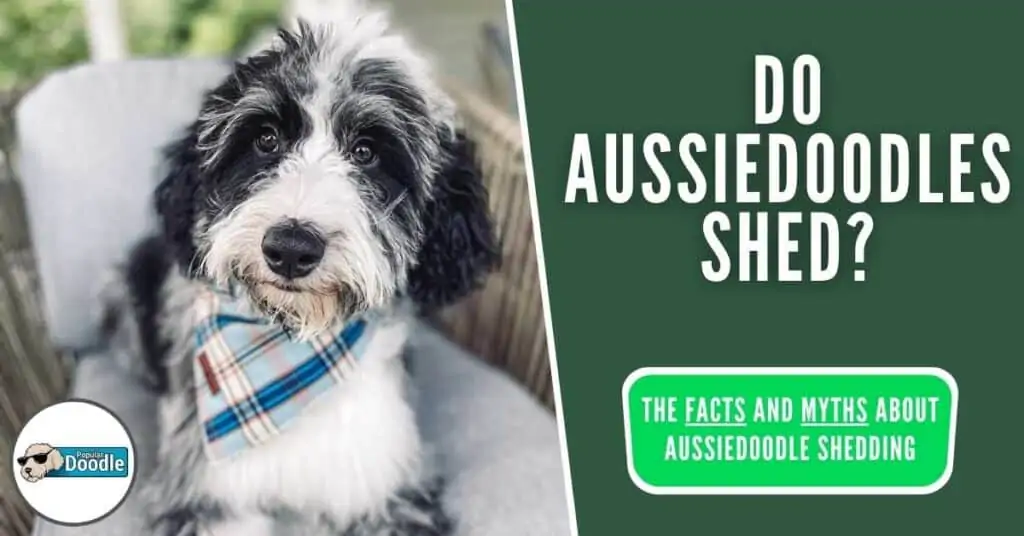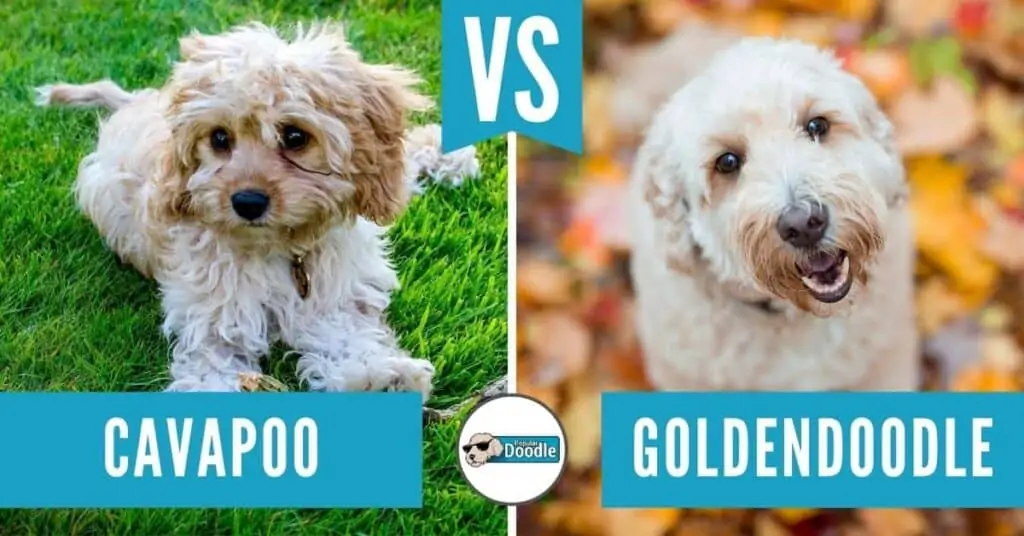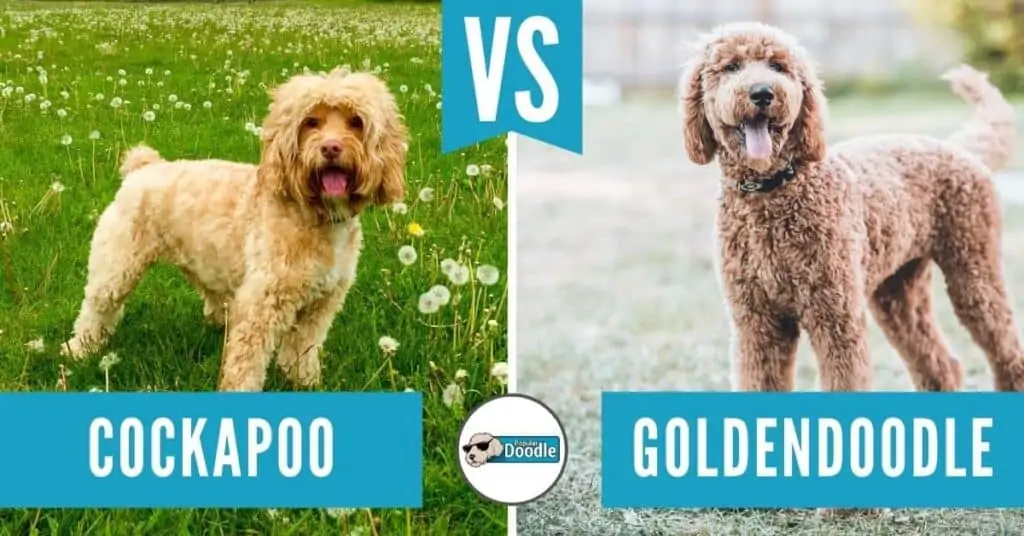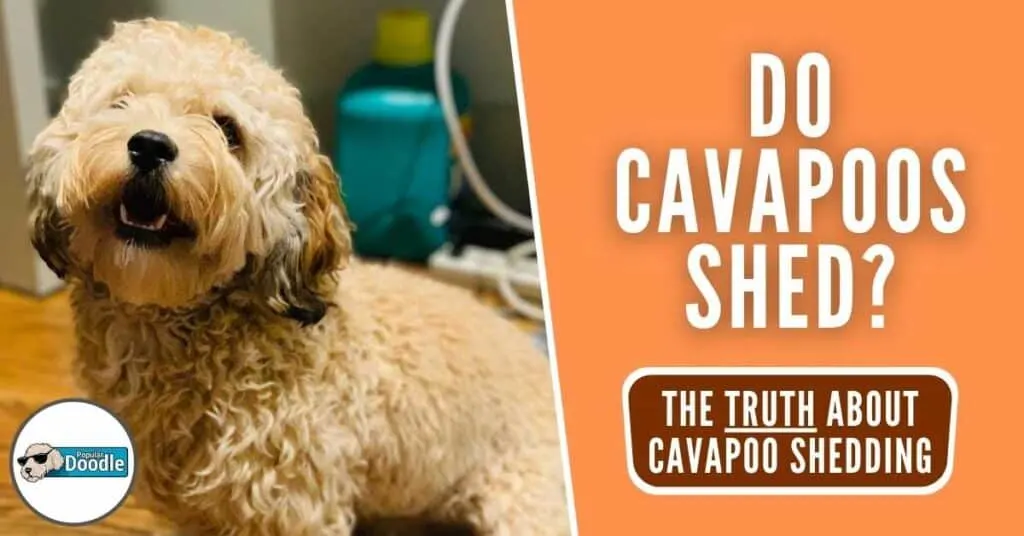
“Do Goldendoodles shed?” may be the single most common question that prospective owners of this breed ask. Unfortunately, there is a lot of misinformation out there about Goldendoodle shedding that needs to be cleared up.
Let’s cut to the chase and separate fact from fiction when it comes to answering this question…
Do Goldendoodles Shed?
Some Goldendoodles will shed while others won’t. Because they contain the DNA of one non-shedding breed (the Poodle) and one shedding breed (the Golden Retriever) they can not be considered completely non-shedding. However, they typically will shed less than their Golden Retriever ancestors.
The amount of Goldendoodle shedding your puppy will experience is largely dependent on what generation they are and the genetics of their parents. It’s not always easy to understand, but we’re here to break it down for you!
This article will not only answer “why do Goldendoodles shed?” but we’ll also talk about how much you can expect your Goldendoodle puppy to shed. Finally, we’ll talk about tips and tricks for managing any Goldendoodle shedding you may deal with throughout your dog’s life.
Why Do Goldendoodles Shed?
Goldendoodle shedding works largely in the same way as other dog breeds. There are four main causes we should explore to answer this question…
Year Round Goldendoodle Shedding
All animals with hair shed…even humans! Shedding happens as old hair particles die and are replaced with new ones. This is a completely normal and, in most cases, a completely healthy process.
Dog breeds that have continuously growing hair, such as the Poodle, are essentially non-shedding. This is because the hair shafts have longer life spans and therefore the shedding is infrequent and essentially unnoticeable.
Seasonal Goldendoodle Shedding
Many dogs, potentially including Goldendoodles, will shed significantly more in the spring and fall seasons. The reason for this is their coats are adapting to become lighter or heavier to match the weather.
Related: Do Goldendoodles Like Snow? (+Cold Weather Safety Tips!)
When Do Goldendoodles Shed Their Puppy Coat?
All puppies, including Goldendoodles, have a different coat as puppies than they do as adults. Goldendoodle puppy coats are generally very soft and thin while adult coats are typically stiffer, longer, and thicker.
Around 5-12 months of age, they’ll gradually shed this coat as it gets replaced with their adult coat. If you notice this, don’t panic as this doesn’t mean that your Goldendoodle puppy will continue shedding for their entire life. You won’t know for sure if your adult Goldendoodle sheds until they’re about 2 years old and their adult coat is fully grown in.
Health Issues
If your Goldendoodle sheds significantly more than they usually do it could be because of a health issue. There are loads of potential health problems that could cause your Goldendoodle to experiences excess shedding, but a few are parasites, infections, allergies, and cancer.
Call your vet if you notice excessive scratching, foot licking, open sores, or skin irritation. In non-emergencies, you can live chat with a veterinarian online by clicking here.
Many of these health concerns are expensive to treat. This is one reason why I believe that every Goldendoodle owner should invest in a quality pet insurance policy—I personally use and recommend Healthy Paws for my Goldendoodle!
How Much Do Goldendoodles Shed? / Do Goldendoodles Shed a Lot?
As mentioned earlier, how much Goldendoodle shedding you’ll experience is highly dependent on what generation they are. It’s important to note that Goldendoodles are not guaranteed to be non-shedding. Any breeder who tries to tell you otherwise is either lacking proper knowledge about the breed or being deceptive. Either way, it’s a major red flag and not a sign of a responsible Goldendoodle breeder.
With that being said, Goldendoodles can be non-shedding. There is just no way to guarantee it. Let’s go over some common generations to determine which Goldendoodle sheds the least.
Related: Goldendoodle Generations Explained (F1, F1B, F1BB, F2, F2B, F2BB, F3, Multigen)
F1 Goldendoodles
The F1 Goldendoodle generation is one of the most likely to shed. This generation has one Golden Retriever parent and one Poodle parent, so their coat can vary widely in which parent it resembles more.
Many F1 Goldendoodles will have straight, flat coats. These coats are referred to as “improper coats” and don’t container furnishings. Furnishings are hair growth around the mustache and eyebrow regions of your Goldendoodle’s face that is an indicator of coat type.
Sometimes people will get lucky and have an F1 Goldendoodle that is non-shedding or very close to it. In other cases, F1 Goldendoodles can shed as much as a Golden Retriever! Most likely, it’ll fall somewhere in the middle of those two extremes.
The moral of the story is if you choose to get an F1 Goldendoodle, be prepared for at least some amount of shedding. If you’re an allergy sufferer or a neat-freak, you may be better off choosing a different generation or even a different breed of doodle that is actually non-shedding like the Maltipoo or Whoodle.
F1b Goldendoodles
F1b Goldendoodles are, on average, closer to the Poodle in genetics than the Golden Retriever. While F1 Goldendoodles are known as 50/50 Goldendoodles due to their theoretical DNA makeup, F1b Goldendoodles skew towards the Poodle 75/25.
What does this mean when it comes to shedding? It means that an F1b Goldendoodle will likely shed less than an F1, but again this is far from a guarantee.
Overall, this generation is a safer bet than the F1 and can be appropriate for those without severe allergies. However, if your future Goldendoodle shedding is a complete deal-breaker for you, you’re better off looking at an F1bb as we’ll discuss next.
F1bb Goldendoodles
An F1bb Goldendoodle is the closest of the common generations to being a purebred poodle—it contains 87.5% Poodle DNA in theory. For that reason, it is the safest bet for allergy sufferers and those who want the best odds of having a non-shedding Goldendoodle.
My Goldendoodle, Chewie, is an F1bb and is essentially non-shedding—but he’s just one example. On average, most F1bb Goldendoodles are likely to either shed very little or not at all.
At the end of the day, if your heart is set on a Goldendoodle and you want the best odds of it being non-shedding, you should choose an F1bb.
F2 Goldendoodles
F2 Goldendoodles tend to be the worst generation when it comes to shedding. There are many potential parings that can result in F2 Goldendoodle puppies. As a result, coats and other genetic factors can vary widely. This generation can be just as difficult, if not more difficult, to predict than F1 Goldendoodles.
Like with F1 Goldendoodles, many F2 Goldendoodles will have improper coats without furnishings—a telltale sign that they will shed. That’s not to say it’s impossible to get a non-shedding F2 Goldendoodle puppy—just don’t count on it.
F2b Goldendoodles
F2b Goldendoodles are a step closer to a purebred Poodle than an F2 Goldendoodle. While their theoretical DNA percentages differ slightly, this generation is essentially on par with the F1b generation when it comes to the potential for Goldendoodle shedding.
F2b Goldendoodles are more likely to be non-shedding than an F2 Goldendoodles, but less likely than F2bb Goldendoodles or F1bb Goldendoodles.
How to Manage Goldendoodle Shedding
If you’re getting a Goldendoodle puppy, you should at least be prepared for the chance that they could shed no matter which generation you get. Let’s talk about ways we can best manage Goldendoodle shedding—whether it’s a just little or a whole lot!
Feed a Healthy Diet
Obviously, a health diet should be important no matter if your Goldendoodle sheds or not. However, a diet that lacks the proper vitamins and nutrients your dog needs can result in excess shedding that might not have occurred otherwise.
Make sure you feed Goldendoodle dog a balanced, complete dog food. In addition, there is some research that suggests an additional supplement of omega-3 fatty acids can aid in healthy hair growth among other benefits. However, always consult with your veterinarian before adding supplements to your dog’s diet.
Additionally, ensure your Goldendoodle is drinking enough water. This promotes healthy, hydrated skin and should minimize shedding. The general rule of thumb is that dogs should drink about an ounce of water per day for each pound they weigh.
Brush & Bathe Frequently
Having a frequent grooming routine can help you effectively manage Goldendoodle shedding. In addition to preventing matting and distributing healthy oils across their skin, brushing loosens dead hair and sets it free in a controlled environment—much better than all over the house!
While you should be brushing your Goldendoodle at bare minimum once a week, the more often you brush them the less stray hairs you’ll have to deal with.
Bathing is also an important part of your grooming regimen. While you don’t want to bathe you Goldendoodle too frequently, keeping them clean with regular baths can keep hair particles clean and healthy while removing excess, dead hair. Bathing your Goldendoodle around once a month is a good ballpark to be in, assuming they’re not excessively dirty or smelly.
One common misconception when it comes to Goldendoodle grooming is that shaving your dog will prevent or reduce shedding. This isn’t true. While short Goldendoodle haircuts can look adorable and have very easy upkeep, they won’t reduce shedding.
Keep in mind that “short” is different than “completely shaved.” In general. shaving your dog down to their skin should be avoided unless they are matted.
Related: Goldendoodle Lion Cut: 16 Examples of this Unique Haircut for Dogs!
Choose the Right Grooming Equipment
Just as important as how frequently you groom your dog is what equipment you use. For reducing shedding, there are three main items you’ll want to have handy—a slicker brush, a deshedding tool, and a deshedding, hydrating shampoo.
Let’s start with your slicker brush. It’s a basic necessity for all Goldendoodle parents, regardless of shedding. However, many owners make the mistake of purchasing a cheap, generic brand. In my opinion, this is one area where spending a little extra can make a world of difference. I recommend the Chris Christensen Big G (Large), Big G (Medium), or Baby G slicker brushes depending on what size of Goldendoodle you have!
Next is a deshedding tool. While not needed by many Goldendoodle parents, if your dog does shed, this can be your saving grace. The Furminator Deshedding tool is one of the most highly-rated options available. Choose the long hair option in either the large size or small size depending on the size of your Goldendoodle.
Last, but not least, is a shampoo that is specifically made to reduce shedding. I recommend the Burt’s Bees Shed Control Shampoo as it uses natural ingredients, is safe for puppies, and is good for dogs with sensitive skin. This makes it a better choice than a lot of popular competitors.
Buy a Vacuum Designed for Pet Hair
Let’s face it, if your Goldendoodle sheds, you can take the steps above to manage it but you will never really be able to completely eliminate it. Your vacuum is either going to become your best friend or a huge headache depending on which type you use. I suggest investing in a vacuum specifically designed to handle pet hair, like one of these highly-rated options from Amazon:
Invest in an Air Purifier
If you struggle with allergies, an air purifier can help remove the excess hair, dander, and other allergens floating around in the air. There are lots of brands to choose from, but here are a few top choices amongst dog owners:
The Verdict on Goldendoodle Shedding
We now know the answer to “do Goldendoodles shed?” as well as how to manage shedding should it be an issue for your puppy.
In conclusion, Goldendoodles are not guaranteed to be non-shedding. If you’re worried about Goldendoodle shedding, do your research to select the generation and individual puppy that will likely shed less or not at all.
If your Goldendoodle puppy does shed, look at the potential reasons why and do your best to manage the shedding through proper dog care like healthy eating and grooming as well as through handy devices like an air purifier or a pet hair vacuum.






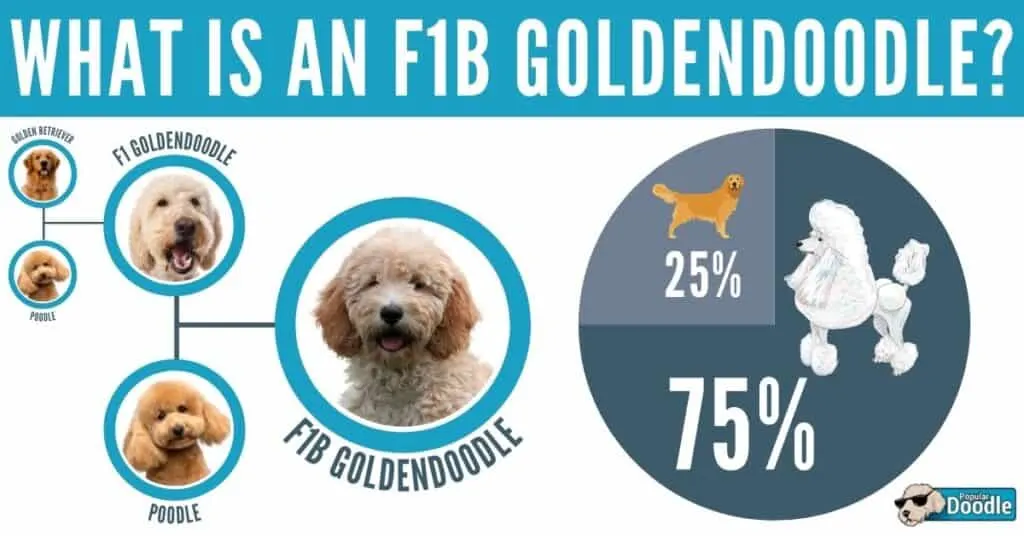
![What is a Sable Goldendoodle? [Photo Gallery & FAQs] what-is-a-sable-goldendoodle](https://populardoodle.com/wp-content/uploads/2021/11/what-is-a-sable-goldendoodle-1024x536.jpg.webp)
